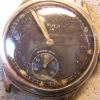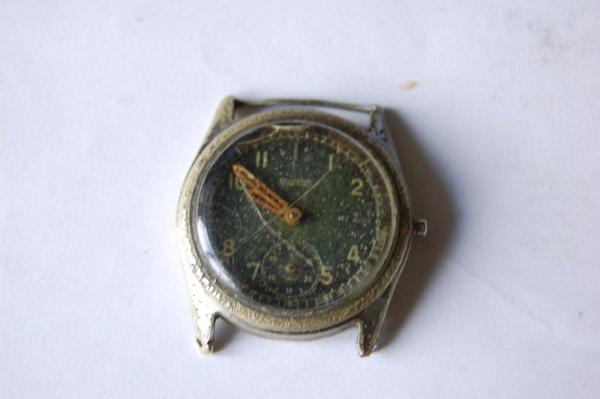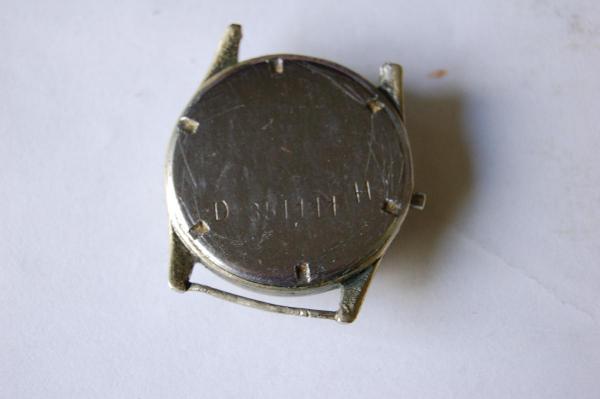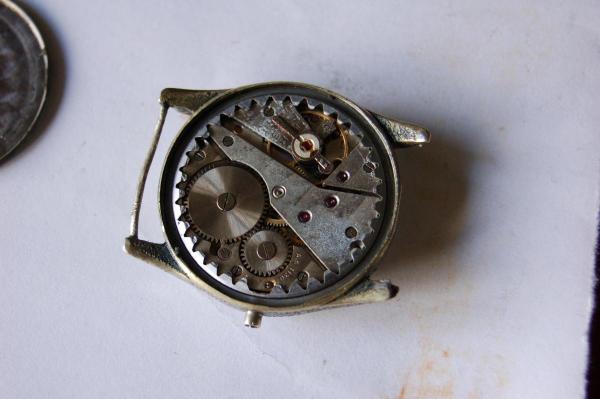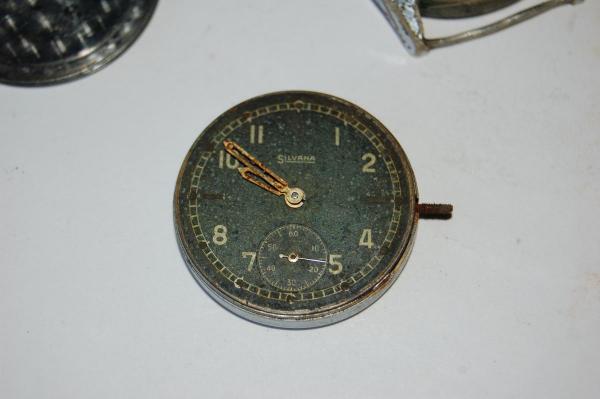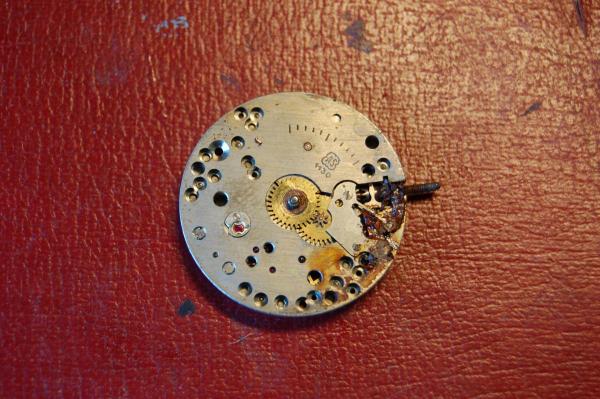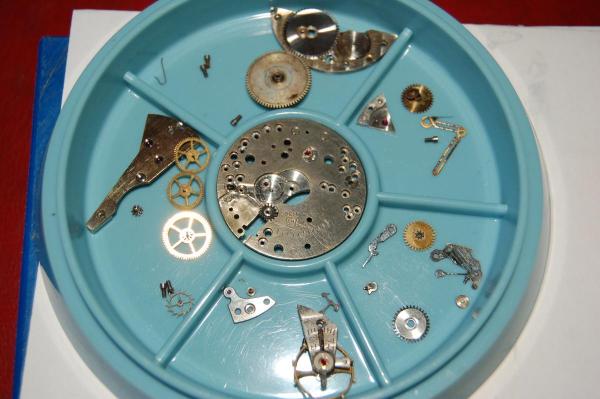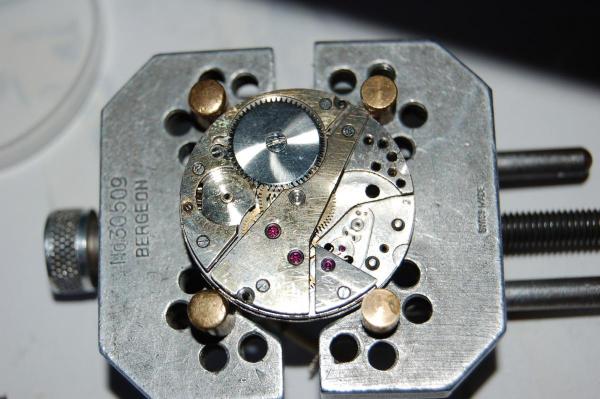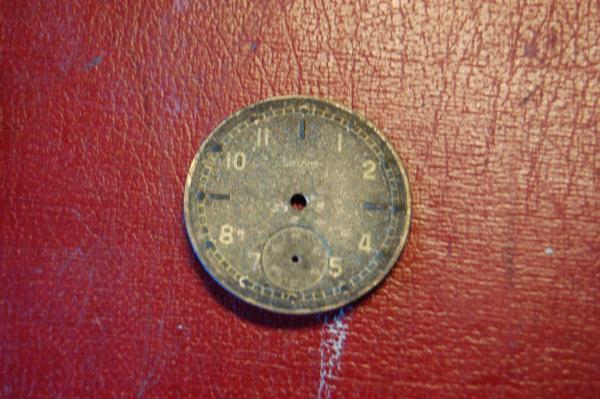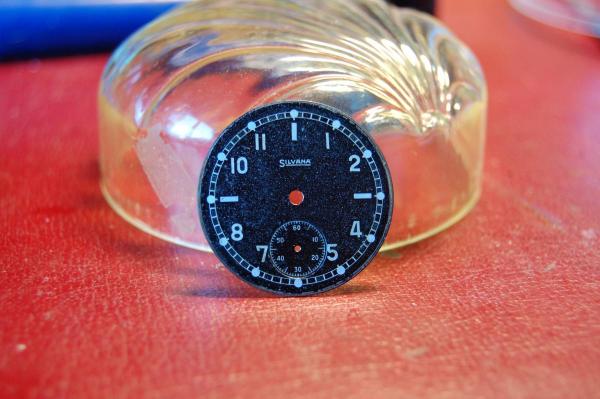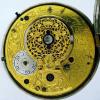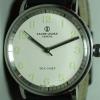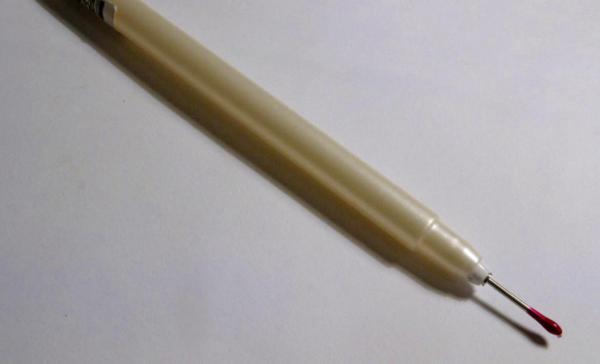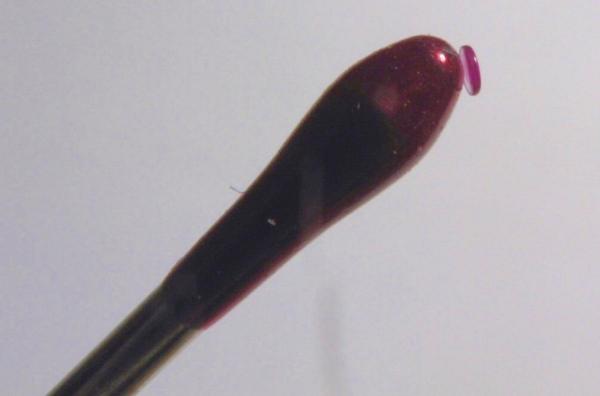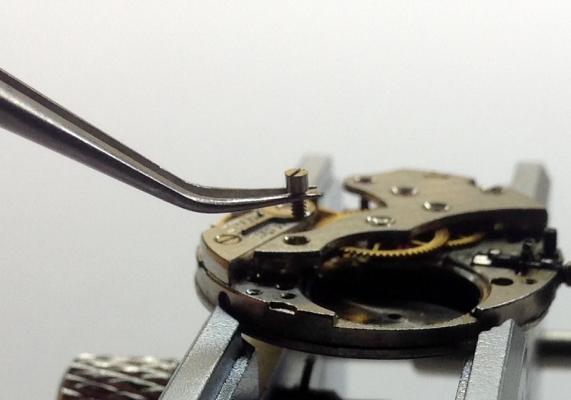Leaderboard
Popular Content
Showing content with the highest reputation on 07/22/15 in all areas
-
Pub not open in the morning... ;) And I don't like dipping my bread and jam in my beer (and my other half won't let me :) )2 points
-
Found a Silvana DH on eBay the other day in some obscure ex Russian state,and as I've wanted a German ww2 military watch for some time I thought I would take a chance,it was listed as not working and from the pictures I could see it was without its crown, on arrival I had quite a job removing the case back,and by the look of the scratches others had tried too. I don't think it had been removed in a long time and when removed I was pleased to find the movement complete albeit very dirty,water had got in past the stem at some time and the dial was very dirty and moldy and the hands rusty, and the keyless work rusted solid, I stripped the watch down and all parts except keyless work were ok so set about cleaning.as I don't have a cleaning machine all was done by hand and I'm still learning as I go! In the areas on the bridges where the corrosion was worse the silver finish is worn away but that aside when reassembled the watch ran fine, I then set about the dial with much trepidation,but after a gentle start found the dial to be very sound so a little more time and effort got a good result. before.and after.now the watch is reassembled and running fine but still needs the case repaired and rechromed and some more pics taken so more to follow,but as this watch only cost £18 with £5 postage I think I've done ok.1 point
-
Also make sure the hairspring is flat. Check for any side of spring to be lifted or if the spring looks conned up. Sent from my iPhone using Tapatalk1 point
-
Sorry. Yes the hair spring should set evenly between both pins. It should not lean toward or touch either side. While the balance is in motion the hairspring should "bounce" evenly between each regulating pin. If it is touching a side that can usually be fixed by s minor adjustment to the hairspring very near to the stud Sent from my iPhone using Tapatalk1 point
-
A lot cheaper than the Swiss equivalents though.1 point
-
1 point
-
1 point
-
If you have small round nose pliers you can sometimes get away with reshaping the end. I have done thI s in the past with springs when I've been stuck. Be careful, it is easy to break it. Far better to get a spring that fits if you can.1 point
-
I must say it is a refreshing change, i know certain forums do go over the top with the whole rep market, like i said its how i got into taking movemnts apart and fixing myself. Ok hair springs still test me and i have to say i have murdered countless numbers of the buggers. Im a seiko man myself now mainly because they're e so numerous and easy to pick up on the bay, ive restored a few of which i shall post my walk throughs of a couple of restoration projects that i have done. Looking forward to adding this forum to the many others from the watch world that i participate in. Hopefully i can be of some help to others .1 point
-
Hello Louis, There is an extract below from that site I keep referring to, I know I keep going on about it but you need to read through it to get a good idea about phasing and generally working on the Accutrons. It is possible to forge ahead and look things up as you go but you run the risk of getting into bother and knacking something up - slow down and read a little (I suppose you may expect this advice from a Senior Citizen :D) . I agree with lowcountry on that particular fix but there are two cell coils (one of which is a doubler that triggers the transistor) so it is good practise to test each coil to ascertain which of them is fouled up. The test is simple enough and all you need is a resistance test on your meter. On a 218 remove the screw at the top middle that joins the two coils together as you can not test individually when the circuit is through both. The Right side coil or single coil has two contacts and if you are getting a circuit there it is usually ok - infinite resistance it is knackered. The Left side or double coil has three contacts loosely shaped like a triangle - top(T), lower left (LL) and lower right (LR). You should get circuits between T and LR, T and LL, LL and LR - any infinite resistance and it is knacked. There is a possibility if the coils are working but the watch is not that some part of the little circuit board has failed but personally I would check for other things like indexing or perhaps has the tuning fork become demagnetised - if yes you need a new one - if anyone can advise me an easy way of remagnetising a tuning fork I would be grateful but I think it was set up at the factory for each fork so it may not be possible for a tinkerer. Also if the coil does not move freely on the magnet due to accumulations of dirt that screws things up. "Power from the battery flows through the transistor, and then through both of the driving coils. One of the coils (the one which is attached to the plate holding the transistor and its components) also has a secondary coil built into it. When the fork springs one way, this secondary coil provides a feedback voltage which causes the transistor to almost stop the flow of current in the driving coils, and stop driving the fork. When the fork springs back the other way, this feedback coil generates a "reverse" voltage, which causes the transistor to allow current to flow in the driving coils again. The fluctuating current in the driving coils produces a varying magnetic field, which alternately attracts and repels the tuning fork magnets. Thus it keeps on vibrating. The system is self-regulating. If the watch receives a jolt which adds to the fork vibration, the circuit automatically reduces power to the fork until it reaches the normal amplitude of vibration. The reverse is also true. While I said it is simple, it took quite a lot of work to develop the electronics to vibrate the tuning fork at the right amplitude, and yet work at such a low current that a battery would last at least a year." - Not my words, thanks to R. Berkavicius for educating me with this info. Hope this helps and as usual if anyone sees that I have got something wrong please post a correction I make mistakes sometimes ! - I will not be upset - quite the contrary, I will learn. Cheers, Vic1 point
-
Very nice ! Good job !! Your wife will be happy to see you wearing the watch I'm sure :) Good luck with the heat too !1 point
-
Hi Transporter! There are several things that set this forum apart from others and you've noted one of them. The folk on here are generally pragmatists who see through the trees and very clearly make out the wood! They're friendly, knowledgeable, tolerant, talented, patient, and welcoming to like souls, whether they are complete beginners (me) or time-served masters of their trade. Glad you found us!1 point
-
Let's not forget Marc's picker upper for handling jewels and hands, particularly small chronograph hands. "Just for you Geo... This is the smallest one in the range, I don't think that I would have a use for the bigger ones. And no, that jewel isn't balanced, it's hanging. I don't know how long the sticky lasts. I've had mine just over a year now and have used it a lot with no loss of tackiness. When it does eventually lose its stick I suspect that it will only require a rinse in cold water and then air dry to rejuvenate it, although at the price I will probably just replace it."1 point
-
Douglas, I'm glad you posted this thread. I've never had the steadiest of hands and this has been a problem with learning watchmaking. My dominant right hand in particular has a bit of a tremor. As with others, I use my non-dominant hand to steady my dominant hand. I enjoy coffee, but that's obviously not helpful in this situation. I've also noticed that my hands are steadier after I've had a drink or two, but I wouldn't drink just for that. I try to be creative when dealing with really small parts. Rodico on the end of a piece of pegwood is one of the best tools you'll ever make. When I was having trouble oiling and inserting a parashock cap jewel into a movement I came up with this Rodico Hershey's Kiss Not only did it create a stable platform and free up my left hand when placing the oil, it also made installing it into the movement much easier. I just turned it over, placed it above the jewel hole and gently knocked it off with my tweezers. To me, Rodico is a miracle product. So many uses. Most people say such and such is "the best thing since sliced bread." I say it's the best thing since Rodico. Of course almost no one knows what I'm talking about when I say that. :D Another thing that helps me is to take a couple of deep breaths and let my body completely relax before starting. It can be very stressful to try to manipulate tiny, tiny parts that are easily lost or damaged. I've seen more than one comparison of watchmaking to bomb disposal work. Though admittedly the consequences of a mistake are far more serious for an EOD specialist than for a hobby watch repairer. Don1 point
-
1 point
-
I think we all have times like that. Many days I'd have problems repairing watches after I'd been working on clocks, can you imagine one minute working on a fusee bracket clock and then repairing a small ladies wrist watch. As clockboy has said sometimes you just have to leave it for another time.1 point
-
Being another 64+ here's how I position screws easily before tightening. I have a set of tweezers with a bend at the tip that allows me to hold screws vertically for positioning before tightening. My left arm/hand rests on the bench and this allows absolute stability when positioning the screws. If it is a deep hole, I just drop the screw in, and if it is shallow, I continue to hold it with the tweezers while screwing it in a couple of threads.1 point
-
Yes, Douglas, I have the same problem and a some more years. My solution, when needed, is to use both hands. Partially cover the movement that you are working on with a sheet of tissue or thin white foam sheet. Place a finger of the left hand (assuming that you are right-handed) onto the movement and use this to steady the screwdriver that you are endeavouring to move into the screw slot, or the tweezers that are holding that little screw that has to fit into that tiny hole. Another tip is to plant the screw head into a finger of Rodico and use this instead of tweezers to place the screw. You will lose fewer screws this way. I also have a little inexpensive mechanical micro-manipulator for some delicate work such as tweaking a hairspring - I found it on eBay, but they are rare items.1 point
-
1 point



